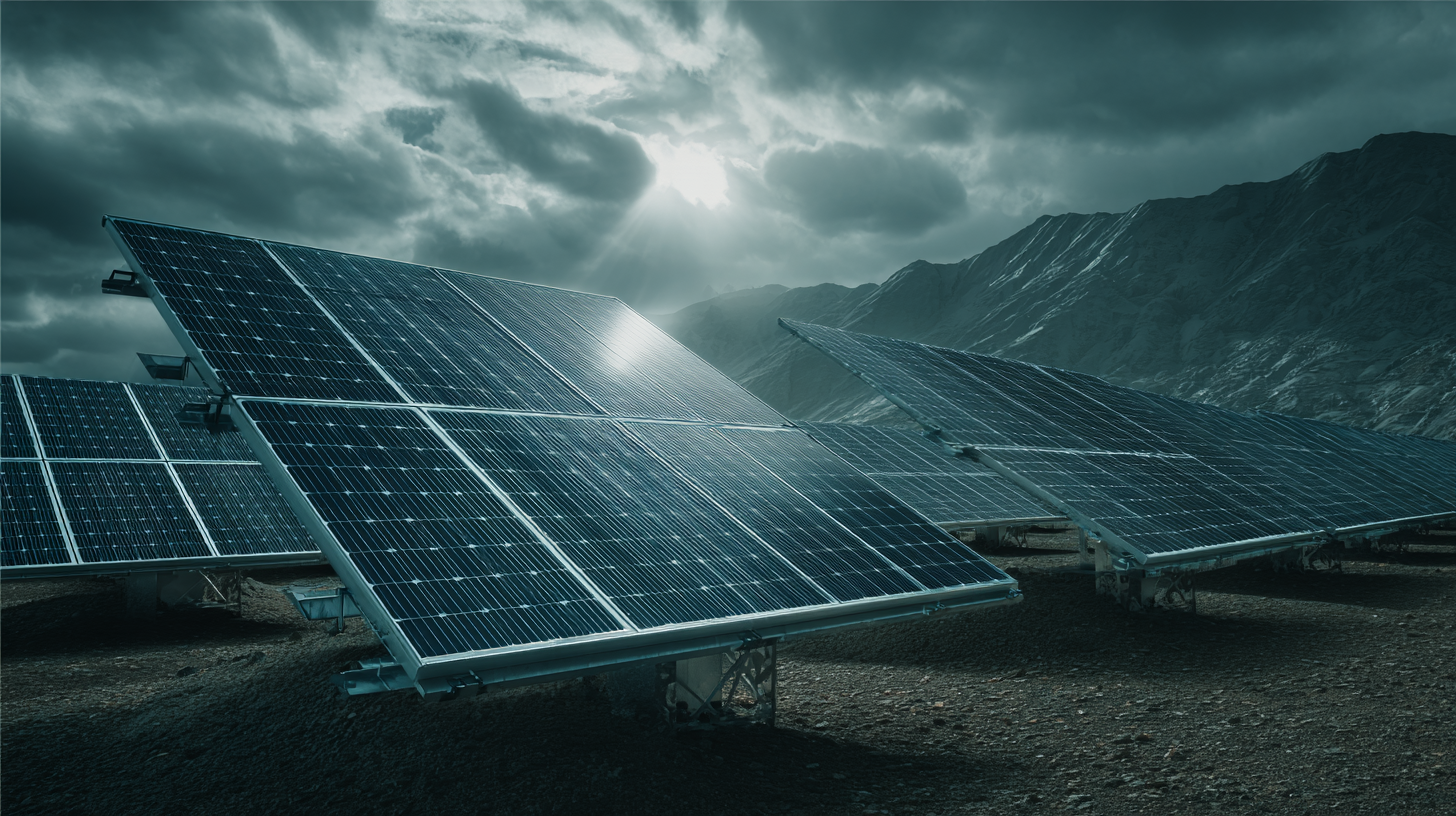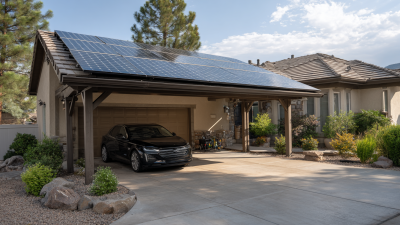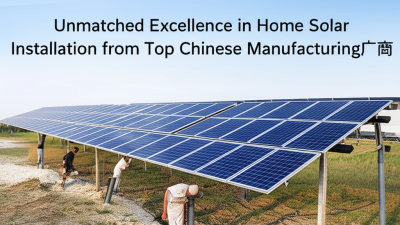Exploring the Future of Solar Energy Installation and Its Impact on Sustainable Living
As the global demand for renewable energy surges, solar energy installation has emerged as a cornerstone for fostering sustainable living. According to the International Energy Agency (IEA), solar power capacity is expected to grow by over 600 GW annually by 2025, making it one of the fastest-growing energy sources worldwide. This rapid expansion is not only a response to the pressing need for cleaner energy alternatives but also a key driver in reducing greenhouse gas emissions. The deployment of solar energy technologies can significantly lower electricity costs and decrease reliance on fossil fuels—contributing to a more sustainable urban ecosystem. By examining the future of solar energy installation, we can identify innovative strategies, technologies, and policies that will shape a more sustainable lifestyle for communities across the globe.

The Rise of Smart Solar Technology in Modern Installations
The advent of smart solar technology is transforming the landscape of solar energy installations, making them more efficient and accessible than ever before. These innovations, such as smart inverters and energy management systems, enable users to monitor and optimize their energy consumption in real-time. By integrating artificial intelligence and machine learning, these systems can predict energy needs based on usage patterns, weather forecasts, and energy rates, allowing homeowners and businesses to maximize their solar energy utilization.
Moreover, the rise of smart solar technology is pivotal in promoting sustainable living. With the ability to connect to the Internet of Things (IoT), solar installations can seamlessly integrate with other smart home devices, contributing to a holistic approach to energy efficiency. This connectivity not only empowers users to reduce their carbon footprint but also encourages participation in energy-sharing networks, where excess solar energy can be distributed within local communities. As smart solar technology continues to evolve, it will play a crucial role in paving the way for a more sustainable and energy-independent future.

Evaluating the Cost-Effectiveness of Solar Panels for Homeowners
The growing adoption of solar energy installation has sparked significant interest among homeowners seeking sustainable living solutions. When evaluating the cost-effectiveness of solar panels, it becomes essential to consider both the initial investment and the long-term savings on electricity bills. While the upfront cost of purchasing and installing solar panels can be substantial, various financial incentives, such as government rebates and tax credits, greatly reduce the burden on homeowners. Additionally, advancements in solar technology continue to enhance efficiency and decrease prices, making these systems more accessible.
Beyond immediate financial considerations, the cost-effectiveness of solar panels extends to their environmental impact. By generating clean energy, homeowners contribute to reducing greenhouse gas emissions, ultimately fostering a healthier planet. Additionally, solar panels can increase property values, providing an attractive return on investment. As renewable energy sources become increasingly mainstream, the integration of solar energy into residential properties not only promotes sustainable living but also empowers homeowners financially in the long run.
The Role of Government Policies in Promoting Sustainable Solar Practices
As the solar panel market is projected to reach $4.12 billion by 2031, with a compound annual growth rate of 12.2% from 2024 to 2031, the role of government policies in promoting sustainable solar practices becomes increasingly significant. Effective policies can drive investment in solar energy infrastructure, facilitate technological advancements, and encourage the adoption of renewable sources among consumers. Governments that provide incentives, such as tax credits and rebates, not only make solar energy more accessible but also stimulate job creation in the clean energy sector.
Moreover, with the growing trend towards a circular economy, integrating sustainable practices into solar energy installation is more vital than ever. A circular economy emphasizes reusing materials and reducing waste, which aligns perfectly with the goals of sustainable living. Governments play a critical role in this transition by enacting legislation that supports recycling initiatives and encourages companies to develop products with longer lifespans and reduced environmental impact. By fostering an environment where both solar energy and circular economy principles can thrive, we can pave the way for a more sustainable future.
Integrating Solar Energy with Smart Home Systems for Enhanced Efficiency
Integrating solar energy with smart home systems represents a significant leap toward enhanced energy efficiency and sustainable living. According to the Energy Information Administration (EIA), solar energy capacity in the U.S. has increased by over 20% year-on-year since 2018, indicating a growing trend toward renewable power sources. When combined with smart home technology, which allows homeowners to monitor and control their energy usage remotely, solar energy can be harnessed in unprecedented ways, optimizing consumption patterns and reducing waste.

A study by the International Energy Agency (IEA) reveals that smart home systems can enhance energy savings by up to 30% when used in conjunction with solar panels. These systems can automate energy usage based on real-time solar generation, directing power to essential appliances during peak sunlight hours and storing excess energy for later use. Furthermore, the integration of smart inverters and energy management systems enables homeowners to participate in demand response programs, contributing to a more resilient energy grid while potentially lowering electricity costs. As the solar energy sector continues to evolve, the convergence of these technologies will likely play a crucial role in shaping a more sustainable future.
Future Trends in Solar Energy Installation: Innovations and Challenges
The landscape of solar energy installation is evolving rapidly, driven by innovative technologies and increasing demand for sustainable solutions. One significant trend is the advancement of photovoltaic materials, particularly the development of perovskite solar cells, which promise higher efficiency at a lower cost compared to traditional silicon cells. These next-generation materials could revolutionize installation processes by allowing for more flexible designs and integration into a variety of surfaces, from rooftops to building facades, making solar energy accessible in previously underutilized spaces.
However, alongside these innovations come several challenges that need to be addressed. The scalability of new technologies may face hurdles such as regulatory compliance and the need for efficient recycling processes for solar panels. Additionally, the integration of solar energy into existing energy grids requires significant investments in infrastructure to manage the variable nature of solar power generation. As the market for solar installations grows, stakeholders must navigate these challenges while promoting education and awareness to encourage widespread adoption for a sustainable future.
Related Posts
-

Uncompromising Quality in Solar Solutions: China’s Leading Manufacturing for Global Supply
-

Ultimate Guide to Mastering Home Solar Installation Techniques for Beginners
-

How to Seamlessly Integrate Solar Energy Installation into Your Home
-

Why Solar System Installation is a Smart Move for Your Home
-

Unmatched Excellence in Home Solar Installation from Top Chinese Manufacturing厂商
-

How to Source Quality Suppliers for Best Solar System Installation with a Comprehensive Checklist